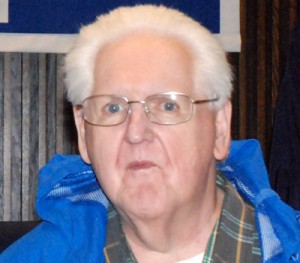Pitt on theater of political conventions
By Roger Pitt

The presidential race this year pits the ultimate Belt Way insider Hillary Clinton against the ultimate outsider Donald Trump.
The conventions over the past two weeks gave credence to voices heard at the End Stool concerned about the power and dominance of the political parties in the Belt Way.
It is also the seat of power for the media, lobbyists and money that influences the two parties. The alliance preserves the status quo that is leading to more skepticism as to the veracity and interest of those in power, who seem are more concerned about world issues and economy more than those back home.
There was more similarity in the race to be president than difference, despite the message from both parties that packaged and orchestrated convention proceedings, echoing rhetoric heard for more than a year. The conventions were more info commercials than drama.
Trump is the ultimate outsider, surviving a lengthy, no holds barred primary involving more than a dozen candidates. Other outsiders were Carly Fiorina, a business executive, and Dr. Ben Carson. The Republican hierarchy eliminated them and did its best to stop Trump.
The Democratic hierarchy virtually ensured Clinton’s bid, stacking the delegate numbers to stop a real threat by Sen. Bernie Sanders. Bernie was the people’s candidate gaining momentum and pocket book donations until the very end.
There is little similarity between Trump and Sanders in political philosophy or style. The excitement they created reflected at the ballot box confirmed the public is tired of the current state of politics.
I miss the conventions that first kindled my interest in government.
The excitement of the conventions in 1952 was an awakening for the public as the first to be televised. It was the drama of the Democratic Convention that year, making all conventions since pale in comparison.
Everybody liked Ike. Gen. Dwight Eisenhower was commander of the European forces during WWII and the Republicans recruited him to run for president.
Harry Truman declined to run for re-election after filling Franklin Roosevelt’s fourth term and posting a surprising win over Dewey in 1948. It set up a hallmark convention to choose the Democratic nominee – destined to be a sacrificial lamb in the 1952 election.
Everything was exciting about that convention because it was not scripted nor the outcome pre-determined. Of course, what did a 10-year-old kid know at that time – still free of the prejudices and personal philosophy accumulated over the next 64 years.
There was a lot of debate and voting on the party platform. Each state selected its delegates – still retaining political power near the people.
Democrats favored a strong national defense, collective security against the Soviet Union, multilateral disarmament, and continued efforts to fight racial discrimination.
There were four major candidates seeking the nomination: Sen. Estes Kefauver of Tennessee; Gov. Adali E. Stevenson II, of Illinois; Sen. Richard Russell, Georgia and Averell Harriman of New York.
Another 14 candidates were included on the first round of voting, state by state. Six were eliminated for the second round. Harriman and three others were eliminated after the second roll call and shifts.
Stevenson became the candidate, by acclimation, following shifts on the third ballot over Kefauver, 617.5 to 275.5. It was the first ballot a candidate got more than a majority of the 1,230 votes.
The convention selected Sen. John Sparkman of Alabama, a conservative and segregationist, to run as vice president. The party nominee for president did not pick the running mate at that time.
Stevenson headed the ticket again in 1956, with Kefauver the vice presidential candidate.
Eisenhower dominated both elections. In 1952, he captured the electoral votes in all but nine southern states. Today most are strongly Republican.
Another memorable year for conventions was 1960.
Richard Nixon had the inside for the Republican nomination after eight years as Ike’s vice president. Again it was the Democrats providing convention drama and a contest to be the party choice for president.
Candidates were Sen. John Kennedy, Massachusetts; Gov. Pat Brown, California; Sen. Stuart Symington, Missouri; Sen. Lyndon Johnson, Texas; Sen. Wayne Morris, Oregon; Sen. Hubert Humphrey, Minnesota and Stevenson, for a third time. In addition there were several favorite son nominations by states, which was common in that era.
Johnson, Symington and Stevenson declined to campaign in the primary elections – held for the first time in 14 states, including Wisconsin.
Television again changed the nature of politics as the youthful Kennedy outshone the veteran Humphrey in debates and on television. Kennedy won primary races in 10 primaries, including Wisconsin. Humphrey won in North Dakota and Washington, D.C.
It was also the first presidential debates and many analysts give credit for Kennedy’s narrow win over Nixon for his showing on national television.
Many End Stool regulars remember that presidential campaign because one of the stops by Kennedy was New London where he visited the old Washington High School.
Democrats had a lengthy platform. It called for loosening of a tight economic policy. “The economy can and must grow at an average rate of 5 percent annually, almost twice as fast as our annual rate since 1953.” (The recent gross domestic product was 1.4 percent.)
Other planks included national defense, disarmament, civil rights, immigration, foreign aid, the economy, labor and tax reform.
My interest in the conventions has withered since then. There is less drama and virtually no surprises, only more infomercials.
